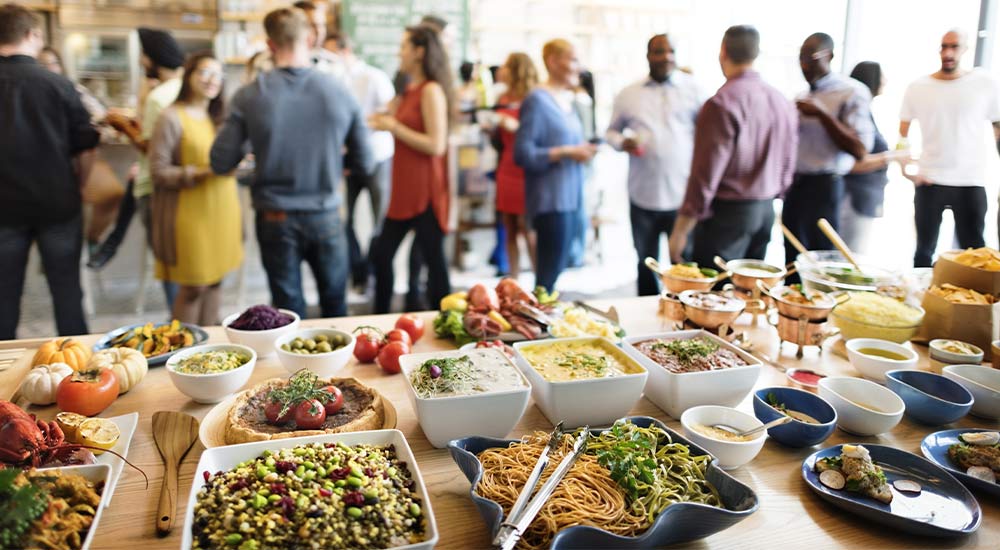How Is A Restaurant Different From A Catering Business?

The food service industry has many businesses that seem similar to many people. Catering business and restaurants are common and profitable businesses in the industry. Differentiating catering from restaurants is the first step to making the right investment decision.
Both restaurants and catering businesses comply with the same safety and sanitary regulations. Another similarity is that both businesses do mass cooking. While their services vary, restaurants and catering companies aim to serve many customers.
Here are the major aspects that make restaurants different from catering businesses.
Styles of Service in Restaurants
The styles of service in restaurants vary. Here are the typical types of service in each business.
Fine Dining Restaurants
The first style of service in restaurants is fine dining restaurants. Fine dining restaurants aim to give the best experience to the customers. The menus are detailed to prevent any confusion for the readers.
A fine dining restaurant is more expensive than other styles of service. The chefs in a fine dining restaurant must comply with a particular dress code.
Your experience and credentials as a chef will count when seeking jobs in fine dining restaurants. Fine dining restaurants are perceived to provide high value, which is the reason for their expensive prices.
Casual Dining Restaurants
The second service style in restaurant businesses is casual dining restaurants. Unlike fine dining restaurants, casual dining restaurants don’t require customers to make dining reservations.
Casual dining restaurants have extensive, less elaborate, and reasonably priced menus. The restaurants don’t consider the waiter’s and chefs’ credentials so much during employment. The cooks may not necessarily have a culinary degree. Another characteristic of casual dining restaurants is the wide food variety.
Fast Food Restaurants
Fast food is another style of service in restaurant businesses. Also known as quick service, this style is the least expensive. Fast-food restaurants are simple and usually specialize in one type of food. Examples of foods served by fast-food restaurants include ice cream, fried chicken, fries, and sandwiches.
Styles of Service in Catering Businesses
Though many people may think that all catering businesses are generally the same, many different styles exist. We will go over the most common types below.
Event Catering
The first style of service provided by catering businesses is event catering. Caterers provide services to various events like weddings, parties, family reunions, and baby showers.
The caterers prepare the food before the day of the event. They then serve the already prepared food to the guests during the event in buffet styles.
Mobile Catering
Mobile catering is another style of service in catering businesses. Catering businesses use large commercial vans to supply food to customers in different places.
Mobile caterers have special equipment to keep the food/beverages hot or cold during the supply. Tourists in amusement parks and people in worksites are the commonly targeted customers of mobile catering.
Specialty Catering
Specialty catering is another style of service in catering businesses. The style specializes in specific types of foods. For example, you’ll find catering companies that only make wedding or birthday cakes.
Specialty catering also has a specific targeted audience. A perfect example is a catering company that only makes special diets for overweight people. Examples of special diets made by such a catering company are ketogenic diets, GI soft diets, and low fiber diets.
Delivery Catering
The last style of service in catering businesses is delivery catering. The style requires the customers to order the foods online or via phone calls. Once the order is placed, the food gets delivered to the customers’ doors.
Costs
Restaurants receive high volumes of customers in a day. As a result, they must have the needed stock to make the menus for all the customers. Always having enough stock in place subjects restaurant businesses to high inventory costs.
It’s always challenging for restaurants to determine an accurate amount of stock and staff needed to make the menu for a day. Such uncertainties also end up costing some restaurants more.
For catering businesses, customers make orders before menu preparations. Caterers can determine the needed stock and staff to produce the menu. Cost control becomes more manageable, limiting inventory and other hidden expenses.
Differentiate Catering from Restaurants
Restaurant and catering businesses have a lot in common. Understanding their differences is key to starting your business or seeking employment in either of them. Styles of service and costs will help you differentiate catering from restaurants.





